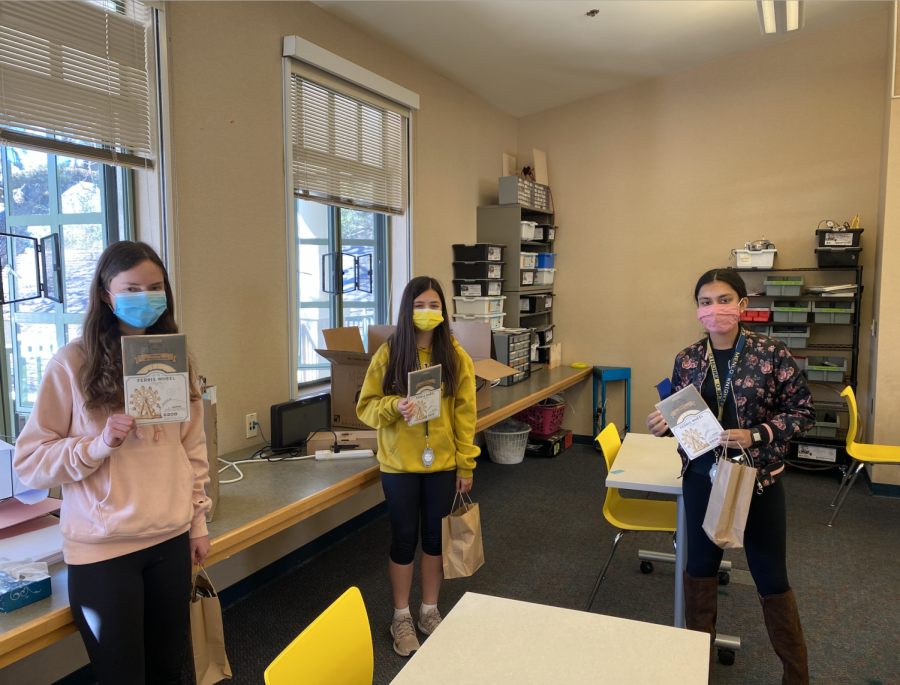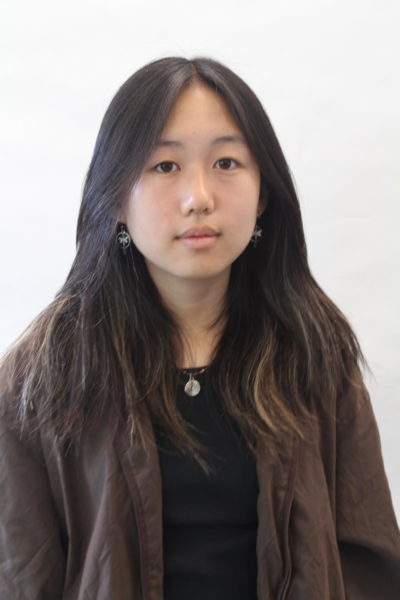MBEST Workshop Series for Girls in STEM Adapts To Virtual Learning
Students pick up their lab kits for MBEST at school while socially distancing. Photo courtesy of Nina Arnberg.
April 14, 2021
Despite the hybrid learning model, many events and workshops like Menlo’s Bridge to Engineering, Science and Technology have remained fully online this year. During a typical year, MBEST is in person and on campus, allowing students to have more personal interactions and hands-on experiences. However, the MBEST leadership team has implemented several changes this year to make the workshop remain a positive learning environment for girls in STEM at Menlo.
MBEST student leader and senior Mallika Tatavarti believes that the workshops are still fun, and she enjoys her position as a role model to students. “The workshops themselves are always so fun. It’s also really nice to get to be a leader at the workshops and […] to be one of the upperclassmen that the younger girls might look up to,” Tatavarti said. “I think that’s my favorite part because it feels like yesterday that I was in their shoes.”
However, online MBEST meetings have changed the way that Tatavarti interacts with her fellow MBEST leaders and leadership team. “Over Zoom, it’s hard to gauge people’s reactions and bounce off one another, so although we have still been able to put on some great events, the process feels a little less personal,” Tatavarti said.
MBEST has also had to adapt its projects to fit the virtual learning format. “Although it is disappointing that we were not able to hold hands-on workshops in the Whitaker Lab this year due to virtual school, our take-home workshop projects have remained interactive,” MBEST student leader and junior Kate Virsik said. “For instance, in the winter, students created circuit light-up holiday cards, and a few weeks ago they built laser-cut Ferris wheel models.”
Despite the setbacks in pursuing in-person projects this year, Virsik has found that the virtual learning format has improved MBEST in some ways. “I think the virtual workshop format this year has made the workshops accessible to more students. Not only are the workshops shorter, but they are also recorded, so students who are unable to participate during the […] workshop […] can still pick up a workshop kit and complete the project in their own free time,” Virsik said.
Upper School MBEST Director Nina Arnberg has discovered ways to adapt MBEST to a virtual learning environment. “The leadership team has been creative about how to send the best of MBEST home to our community,” Arnberg said. “Our first three weekend workshops were centered around bringing a Whitaker-based experience directly to the students. We organized over 100 plus supplies and snack kits and connected and collaborated through Zoom.”
Freshman Sarah Glodek agreed that having MBEST workshops online has certain advantages. “My favorite part about attending MBEST workshops this year was that it was a lot easier to meet new people, and it was just more convenient to do it on Saturday morning on Zoom compared to Saturday morning at school,” Glodek said.
Like Glodek, Arnberg believes that hosting MBEST online has its advantages. “Since our workshops were virtual, more Middle and Upper School students could join, and we were able to connect with Menlo alums across the U.S.,” Arnberg said. “Although our leadership opportunities have changed, […] the flexibility of hosting virtual planning meetings has allowed for more students to support the program through their inspired planning and facilitation of programs and events.”
Still, there have been some challenges that have come with attending virtual MBEST workshops. “I think that the biggest difficulty of doing MBEST workshops this year virtually was actually doing the [workshop] project, because over Zoom, it’s harder to help others, […] get help and […] show your project to the people in your group,” Glodek said.
Virsik also enjoys helping out students at MBEST workshops. “I really enjoy passing on my enthusiasm for STEM and inspiring younger students to get involved. It’s also a lot of fun to go through the process of brainstorming, advertising and helping students with a workshop project,” Virsik said.



